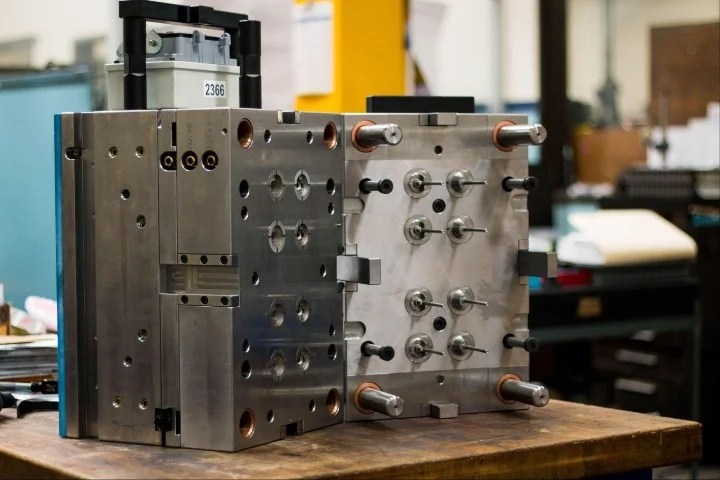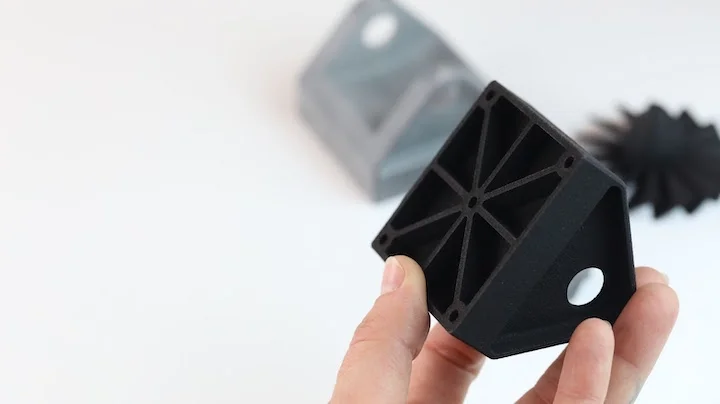Time to read: 4 min
Brim
A brim consists of 3D printed material that surrounds and attaches to the base of an object to aid in adhering to a bed/print surface.
EEprom
EEprom is like RAM for a 3D printer’s electronics. Some values can be stored here and accessed quickly, in addition to what is known in firmware and held permanently.
G-code
G-code is, in simplest terms, the language used by software to tell machine tools what to make and how to make it. The “how” in this interpretation is defined by instructions on where to move, how fast to move, and through which paths in a plane to move. For FDM/FFF 3D printers, G-code also includes instructions on how quickly or slowly to extrude/retract filament.
There are a few different ways to prepare GCode for a printer. One is to use a slicing program to generate lines of G-code from a 3D model. These programs take a CAD model, slice it into layers, and output the G-Code required for each layer. Slicers are the easiest way to transform a 3D model into a printed part, but the user sacrifices some flexibility when using them.
Another option for G-Code generation is to use a lower level library. Libraries offer precise control over the tool path, and thus are useful for complex prints that do not accept blind slicing in a single run by a pre-determined sequence in a unified program. The final option involves writing custom G-Code. While absolutely unsuitable for an entire model, this may be the best choice for running test lines while calibrating or troubleshooting a printer.For instance: easily-interpretable G-code exists for homing the carriage of a printer on an axis, turning a motor on or off, making a resistor heat up or cool down, setting maximum operational speeds, and a variety of other functions.
Plating
Plating describes the process of readying a model for 3D printing by placing it on an imaginary flat plane as a representation of where the model will be printed on the 3D printer’s build platform. Individuals rarely plate more than a few objects together at the same time, but enterprise-level printers which construct objects in a durable powder medium (automatically supporting all overhanging geometries) can plate dozens or hundreds of objects together in the same print run. This saves time and money, as these machines are expensive to operate and their feedstock is not infinitely reusable.
PID
PID tuning refers to a proportional-integral-derivative control algorithm used in some RepRap 3D printers to stabilize the heat output of electronic elements. Properly tuning the P, I, & D values in firmware can help standardize temperatures for the hotend and heated bed.
Raft
A raft consists of a 3D printed material pillow onto which material can be printed, this can help more delicate or complex shapes to adhere to a bed/print surface.
Skirt
A skirt consists of loops of 3D printed material around an object but not attached to the base. They are ordinarily used to get filament flowing out of the hotend during the beginning of printer operation so that printed parts do not contain imperfect material.
Slicing Error
Slicers are complex tools that rely on correct data. Inserting models or parameters that do not fit the software can easily result in errors, and even a properly sliced object can still print incorrectly if care is not taken to regulate the host software’s interpretation of sliced models and governance of the 3D printer itself.
The most common reason to encounter a slicing error is non-manifold mesh. Since a manifold mesh is watertight (no holes allowed), a non-manifold mesh may undetectable holes between surfaces or vertices. That is: every edge of the describing triangles in an object must have exactly two connected triangles. Additionally, objects stacked together without unification can result in non-manifold errors. For instance, if embossed letters are not fused to a surface, they may hover slightly above it – this will make the model unacceptable for slicing. If it does not return an error, slicing software may drop the offending characters to the bottom of the ‘floor’ of the virtual environment, often fusing them with the object they were meant to adorn. Another typical error involves using very tall layer heights. Layer height must be smaller than nozzle diameter for the model to slice.
Support
This printed material aids in creating complex geometries and overhangs that might otherwise fall if printed over thin air. Using PVA (or HIPS) enables support material to be washed away with water (or limonene for HIPS) after printing. Support can be printed using the same material as the main print, however this creates attachment points that must be sanded smooth. In order for a printer to use support material of a different variety than its model material, the printer must be equipped with two or more extruders. These will operate almost simultaneously to build the final object and the supporting material around/within it.
Warping/Lifting/Curling
As an FDM/FFF 3D printer prints, the material extruded rapidly cools – either in open air or in the presence of fans controlled by software. Depending on the material, if this cooling occurs too quickly or slowly it can cause a print to lift from the printing surface and ruin the overall appearance of a model, as well as interrupting the deposition of additional layers. Warping and curling occurs when the print adheres properly to the printing surface, but thin parts bend as they cool – possibly disrupting further deposition or the overall structural integrity of the model.

